
| Since insects inhabit a world of plants, interactions between them are guaranteed, whatever the form they take. For instance, insects will land on plants for having a nice platform for inspecting the environment. Such interactions are opportunistic and accidental, quite different from the other plant-animal interactions I describe. Yet there are also some interactions that are in between the extremes of accidental and purposeful interactions. Here are a few examples, which don't fit well in the other categories I delineated. |
| Plants as nesting material |
| Megachile leachella |
| Authority | : | Curtis, 1828 |
| Nederlands | : | Zilveren fluitje |
| English | : | Silvery leafcutter bee |
| Deutsch | : | Dünen-Blattschneiderbiene |
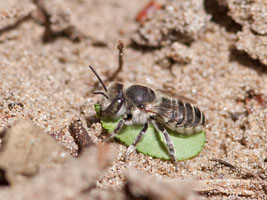 |
| Amsterdamse Waterleidingduinen, the Netherlands; 18 July 2010. Leafcutter bees cut leaves for the construction of their nests. |
| Trachusa byssina |
| Authority | : | (Panzer, 1798) |
| Deutsch | : | Große Harzbiene |
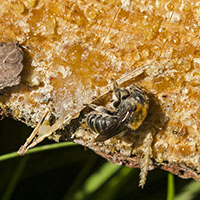 |
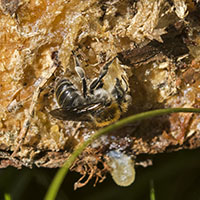 |
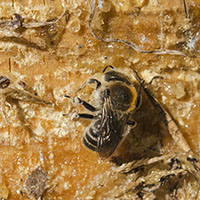 |
| Gärdby (Öland), Sweden; 15 June 2016. Female collecting resin for nest construction. |
||
Plants creating favorable habitats |
In areas with good plant cover, plants always form the habitat for insects. However, sometimes this generic relationship becomes more specific. Presence of epiphytic mosses on tree trunks, as shown below, may affects humidity of the local environment, which may promote growth of algal cells - food for springtails. The alternative explanation is that the higher humidity is the reason why the springtails cluster on the edges of the patches with liverworts. |
| Anurophorus laricis surrounding a patch of Frullania dilatata |
| Nederlands | : | Helmroestmos |
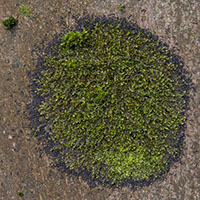 |
 |
| Amsterdamse Waterleidingduinen, the Netherlands; 17 April 2016. | |
| Anurophorus laricis surrounding a patch of Metzgeria furcata |
| Nederlands | : | Bleek boomvorkje |
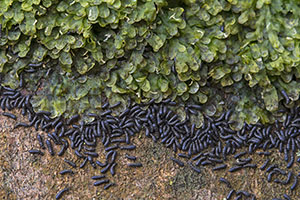 |
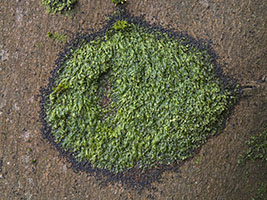 |
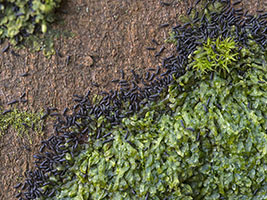 |
| Amsterdamse Waterleidingduinen, the Netherlands; 17 April 2016. | |